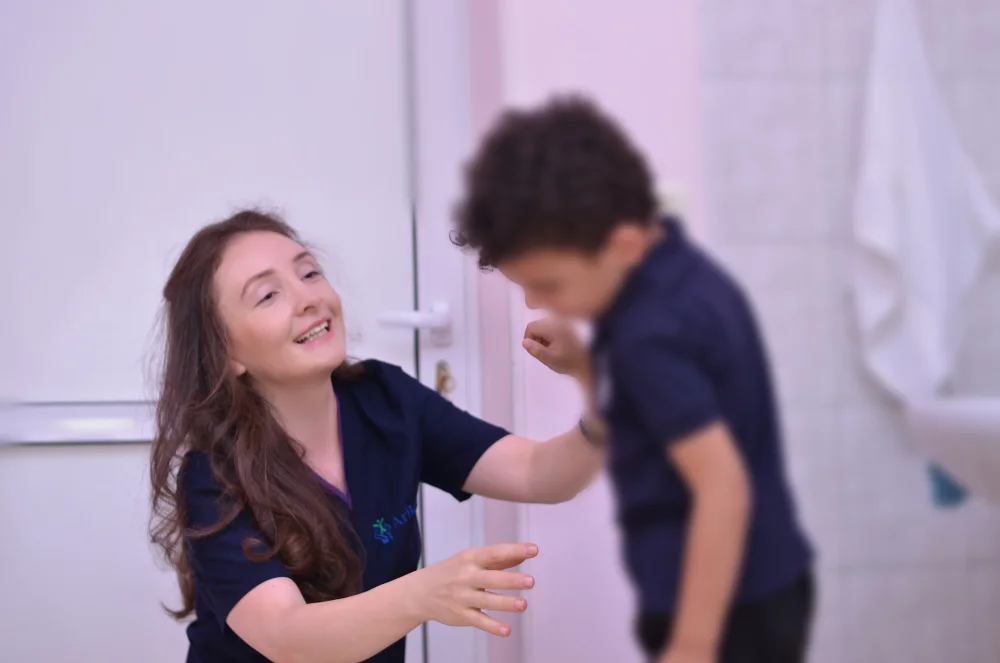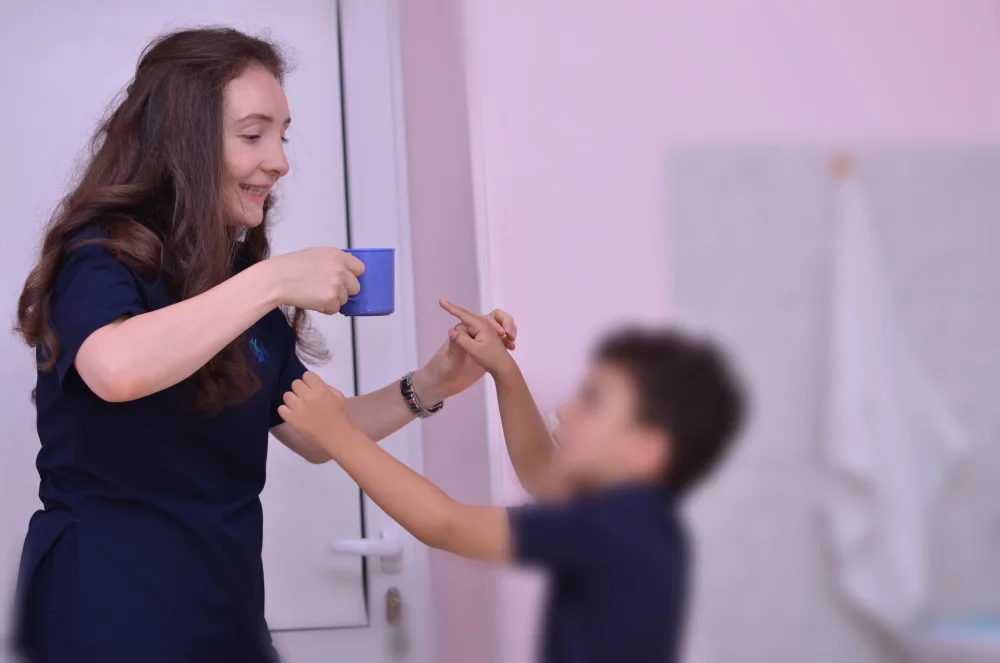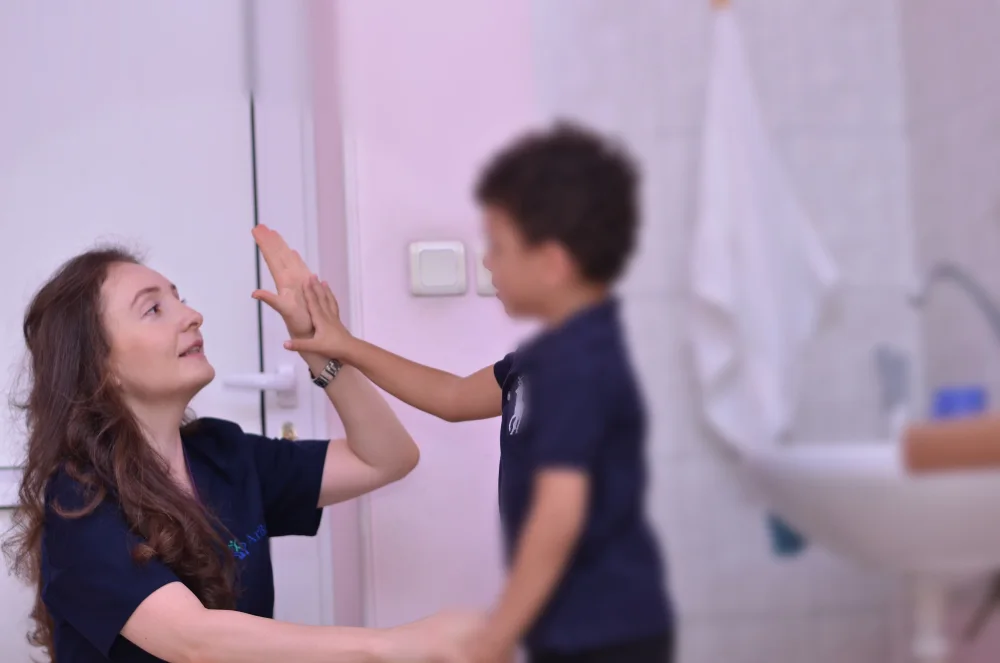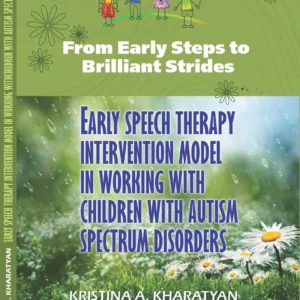Autism spectrum disorder, is a developmental disorder that has its onset in early childhood and persists into adulthood. In general, it affects three areas of development; such as communication, social interaction, and behavior.
Starting from the age of 8 months, you can notice and pay attention to certain developmental deficits, including gradual loss of eye contact in social interactions, inability to establish relationships with peers, lack of social or emotional reciprocity, speech delay or loss of words, inability to use existing speech as a means of communication, often the presence of repetitive speech, non-age-related to play activities (e.g., pretend play, role-playing). There are frequent behavioral flashes, monotonous repetitive body movements and actions, consistent preoccupation with small parts of objects, tendency to rotate, consistent sniffing or mouthing, and limited interests (e.g., watching the same cartoons over and over).

The child’s behavior and worldview are changing
Here its important to mention about appearance of negative behavioral manifestations which are aggregating with age. However, in this case, very often, many parents refer to a speech therapist instead of behavior therapist, thinking that deficit in verbal communication is the reason for those manifestations. However, the reason of all inadequate behavioral outbursts are followed by the child’s oddities in worldview and difficulty of perceiving external stimuli coming from outside world, as well as, internal sensory stimuli perceived by all of our 5 senses.
For example, when a child is exposed to any changes in everyday life, or when he enters into an unfamiliar place or appearing in a noisy environment with his peers, his starts to cry, escape, or show other inadequate behaviors.

Possible causes of autism
So far, there have been many studies trying to explain causes of autism. Some of them acclaim that the cause lies in a genetical mutation, others state that it is a developmental problem starting from birth. Autism is often occurring due to the combination of high-risk genes and environmental factors that affect early brain development. Speaking about early childhood autism, it can be stated that the probability of autism increases as a result of genetic predisposition and environmental factors at the same time. Today, worldwide, there are many different diagnostic tests and measurements, which psychiatrists are using to diagnose autism and facilitate proper treatment strategies. The most effective of those treatment approaches are provided by special corrective and rehabilitative centers where teamwork (including speech therapist, psychologist, occupational and physiotherapist, special educator, etc.) is of outmost importance. In face of this, speech therapists have to utilize all possible approaches to facilitate communication and speech development. Although there are many different corrective approaches that would facilitate communication and speech development, it is widely known that individualized programs give the best results, where parents, kindergarten, and other social support systems are in collaboration with the child’s individualized educational plan. Thereafter, it would become easier for a parent or other caregiver to notice any peculiarities that would hamper the development of the child; for which they would seek assistance from various experts in the field (i.e., from child psychiatrist, developmental pediatrician, or rehabilitator) to identify risk factors and provide proper intervention as soon as possible.

What should parents do upon seeing any signs and symptoms of autism?
If any unusual manifestations are observed at a particular stage of the child’s development, parents should contact a child psychiatrist, a rehabilitation doctor or a developmental pediatrician to organize possible early detection of the problem and early intervention. Rehabilitation treatment of these children, carried out in specialized centers, is carried out mainly through teamwork: speech therapist, psychologist, occupational therapist, special teacher, physiotherapist, art therapist, etc. Intervention in the problem of ASD (autism spectrum disorder) should be directed at the child, to the family and others, combining all aspects related to the problem: relatives, kindergarten, social and medical resources and the general environment:
Overcoming involves․․․
The extent to which it will be possible to bring the child to the field of normal development is determined by factors such as the child’s mental abilities and a potential, early intervention and properly selected methodological composition of the work, the necessary teamwork, direct participation of parents and, of course, the belief that the efforts made will not be in vain.
Original source here.


